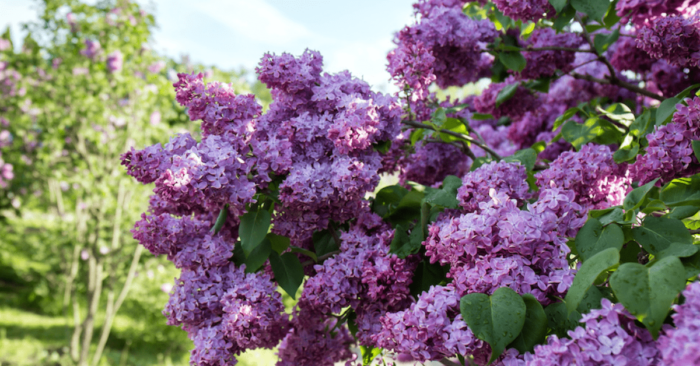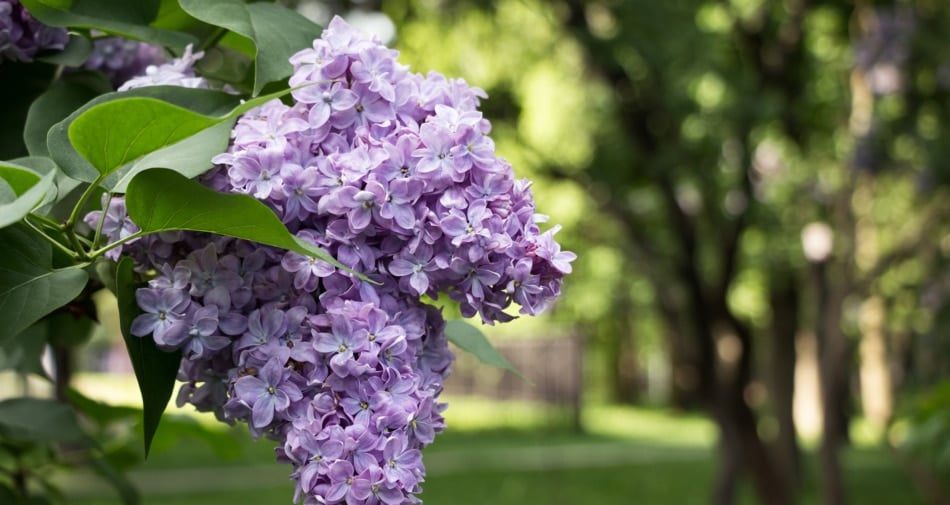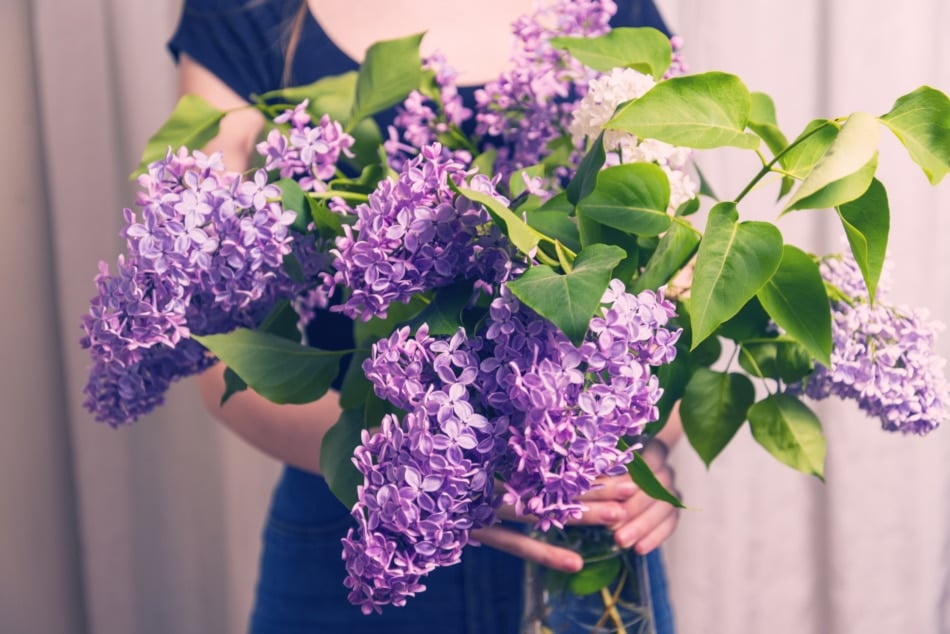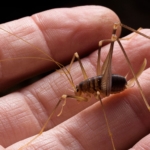Lilac Flowers: Legends, Growing Tips, and More
If there is one thing we all look forward to, it’s lilacs blooming in the spring. It's hard to imagine, but there was once a negative stigma associated with these fragrant flowers. Read on!

If there is one thing many gardeners and flower pickers alike look forward to, it’s the lilac flowers blooming in the spring. Between the strong fragrance and the pretty plumes of white, pink, mauve, and purple blossoms, this shrub is irresistible. Gardeners throughout history felt the same way. Common lilacs appeared in Britain as early as the 15th Century, and they came to the Americas along with some of the first settlers.
Where Did We Get Lilac Flowers?
Before gardeners brought them to Britain and the Americas, common lilacs were found in Eastern Europe, while other types originated in Iran.

Lilac Bushes’ Greek Legend
The history of this shrub dates back so far that the ancient Greeks had a tale about it. In their legend, the god Pan fell hopelessly in love with a nymph named Syringa, but Syringa was terrified of the god and his newfound affection. Pan chased Syringa through a forest, where she turned herself into a lilac bush to hide from him.
Are Lilac Flowers Unlucky?
Throughout Europe, especially within the British Isles, the lilac was considered an unlucky flower. It was perfectly fine to grow them outdoors, but bringing the flowers inside was asking for disaster. Purple lilacs were supposed to be far unluckier than the white ones, to the point that some said bringing a bouquet of purple lilacs inside would “bring death to a healthy home.”
So bad was the reputation of lilacs that old British lore claimed that any girl wearing a sprig of lilacs on her dress was destined to be single forever. At one time, you could even give a bouquet of lilacs to your partner as a sign that you wanted to break up with him or her.
The Victorian era brought an end to the negative stigma surrounding lilacs, finally putting them in their rightful place as a favorite flower. Victorians developed what is known as the “Language of Flowers,” a system that gave flowers meanings that could be used symbolically or as a form of communication. Consequently, purple lilacs became known as the flowers of the first feelings of love, while white lilacs represented the innocence of youth.
Lilac’s Long History

Even in the United States, lilacs have a long history. Both Thomas Jefferson and George Washington grew these shrubs, and there are lilacs growing at New Hampshire’s Governor Wentworth Estate that are believed to have been planted in 1750. Early Americans often used lilacs as a substitute for aloe, a treatment for malaria and as a de-wormer.
Planting and Growing Lilacs
They are exceptionally sturdy, long lived and carefree. Because they spread by root suckers, you can nearly always dig up new starts from old lilac bushes.
RELATED: Gardening by the Moon Calendar
Growing Tips
- Choose a spot with full sun and good drainage. They don’t like wet feet.
- Make sure your planting area has lots of room because these shrubs can grow over 15 feet tall, with a footprint just as large in circumference.
- Lilacs need cold winters, which means that they normally only grow in USDA hardiness zones 3 through 9. In zones 8 and 9, you’ll have the best luck with specialty varieties that can tolerate warm winters. In warm climates, look for varieties including “Lavender Lady,” “Blue Skies,” “Angel White,” or “Miss Kim.”
- When it comes to maintaining lilacs, there are a few things to know. Some people never prune their lilacs and that is fine, but the individual trunks can become very large — easily the size of a small to medium tree. The only issue that arises from not pruning your bushes, aside from the large size, is that if two large branches grow too close together, they may strangle each other, causing a bit of die back. The bush will recover from this, but in the meantime, you’ll want to remove the dead trunks. If you want to keep the branches smaller, then you’ll need to periodically trim out the old growth. The problem is that lilacs only bloom on branches that are a year old or older, so if you want to prune and still have blooms, follow the 1/3 rule. That is, only cut out approximately 1/3 of the older branches each year so that the lilac stays healthy and keeps blooming.
Lilacs have been a popular ornamental shrub for centuries, and with good reason. Few other large shrubs will bloom as much, smell as nice, or be as easy to care for.
RELATED: Edible Flowers, including our Lilac Lemonade Recipe!
Join the Discussion
What do you believe about lilac flowers?
Share your thoughts, experiences, and tips in the comments!

Amber Kanuckel
Amber Kanuckel is a freelance writer from rural Ohio who loves all things outdoors. She specializes in home, garden, environmental, and green living topics.












If the frost doesn’t get the buds, the small yellow finches do. It’s a bit frustrating.
Sharing lilacs with mother nature and her animals is very frustrating at times, but those years where you have a great yield – there is nothing better! Good luck this season! We’d love to see your lilacs in bloom when its time!
Will Lilacs grow in North Carolina?
Of course! We’re growing them in Maine. They’re just blooming now!
Hi Marlene –
It depends on your location in NC. They grow fine in cooler foothills and mountain climates, down in Piedmont and Triangle, Charlotte area you will need to look for heat tolerant varieties such as Japanese or Korean lilacs. These do not get as large as regular lilacs but they do have that wonderful fragrance.
How can you keep a bouquet of lilac cuttings fresh in the house since they are woody?
Hi Carma, remove all the leaves, and cut the stems at an angle to make sure they’ll get plenty of fresh water!
My mom told me when I planted a Lilac bush forty-four years ago that I would never live to see it bloom. So far she is right.
They may need more sun. I have one spot in my lawn where I planted some and they have never blossomed but all the others have. Try moving some of the new growth.
One of mine is 7 ft tall just bought a mini lialic bush planted right outside my living room window. Live in denver, very low maintenance
Growing up in Southwest Ohio I remember our yard having lilacs bushes one purple one white. when i came back from the Army In
68. my mother always loved them i then learned how easy it was to transplant there starts even now 60 odd yrs later i ride around my home town and see lilacs that are offsprings of our lilacs from ours
I’m in Houston, 2here can I find lilacs to plant plz?
Hi Robin, we’re not sure what greenhouses you have around where you are, but they would certainly be helpful, or do a search; you can purchase lilac bushes via the internet.
In the 50′ and 60′ S we had a very old lilac bush in our front yard. After it bloomed each spring my dad would get out the hedge trimmer and square it off to blend in with our hedge. It bloomed every year with more blooms than the year before.
Yeah your dad was smart because it says to trim them as soon as they’re done blooming
I planted a piece of purple lilac bush my mother-in-law gave me 30 yrs a go…..she has had it since 1950. They smell so good!
I had a purple flower bush & planted a white one near it. Eventually the one with purple flowers has turned to white flowers
Planted a lilac bush 3 years ago , about 4 feet tall , has plenty of leaves this spring already , have not seen any flowers on it yet ?is that normal
We have one that is 8ft tall and gets full sun and this is the first year it has blossomed It is now 5 years old.